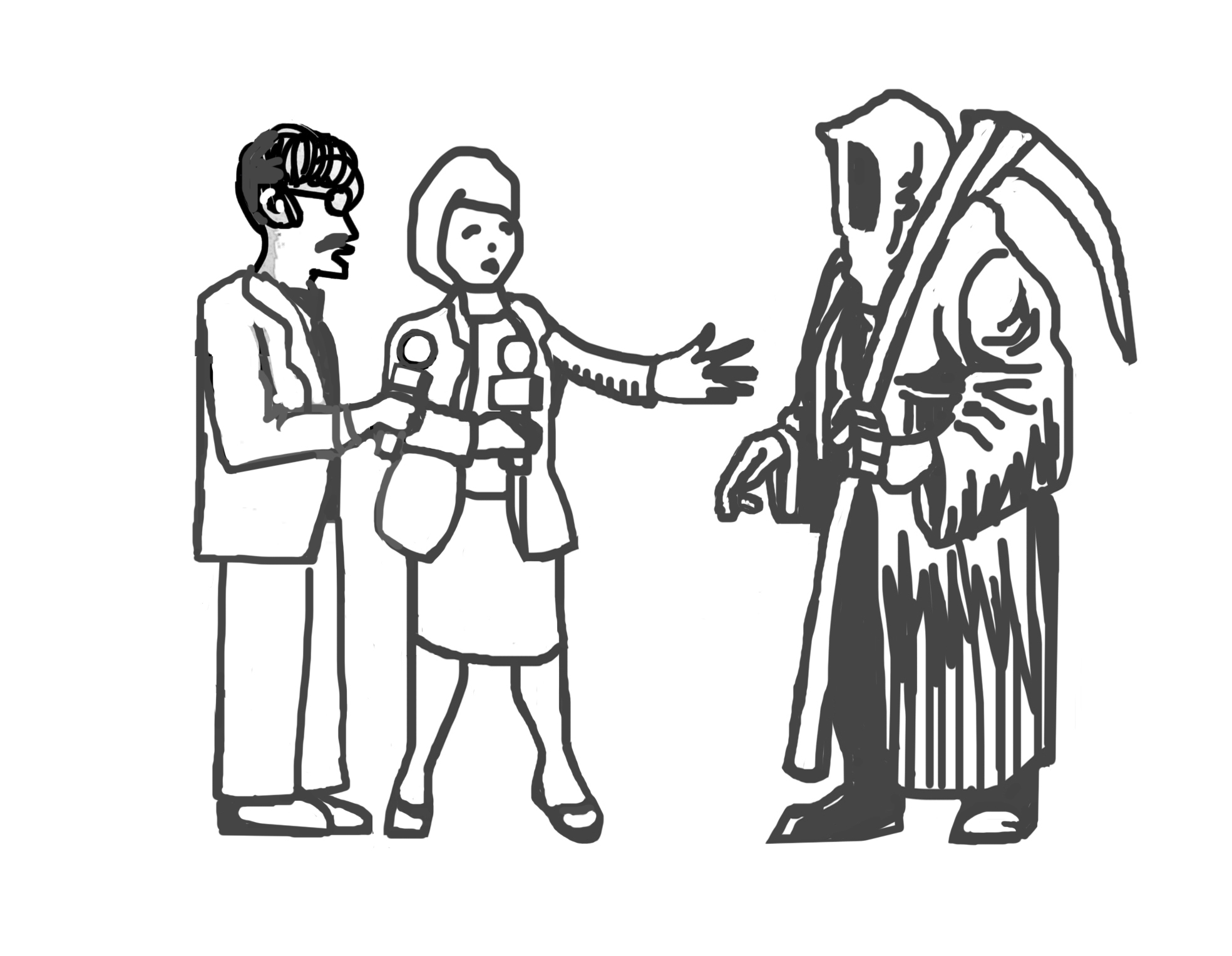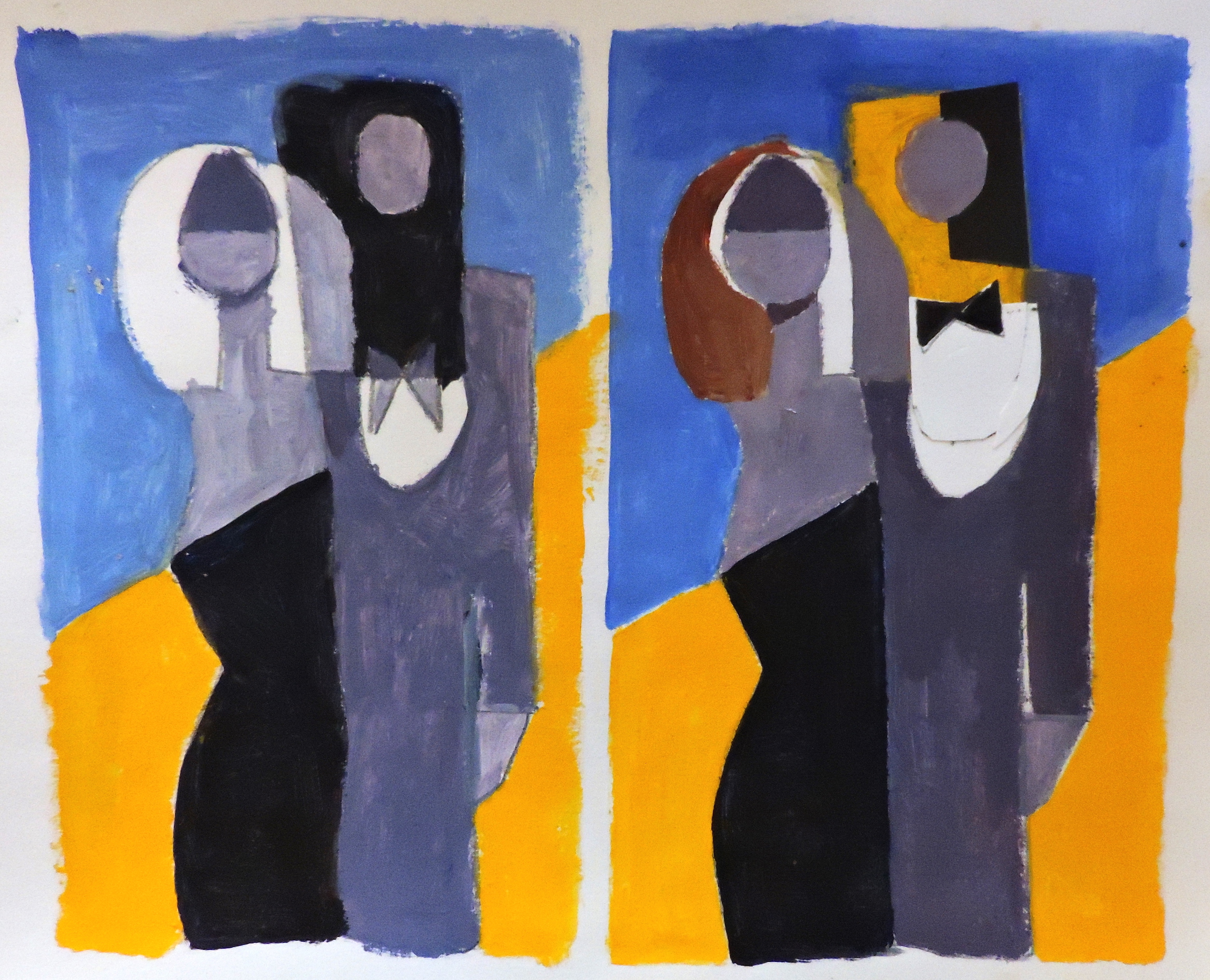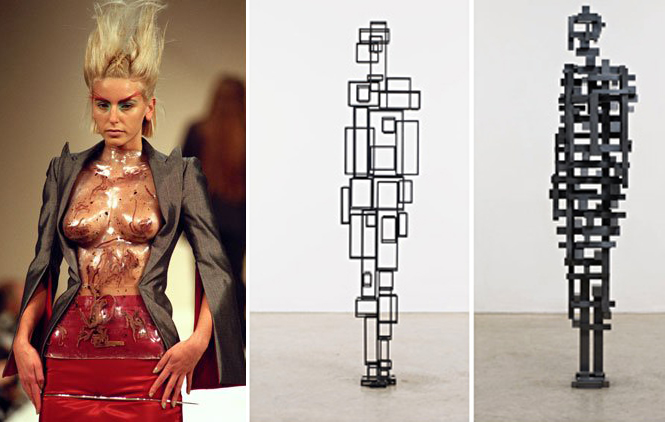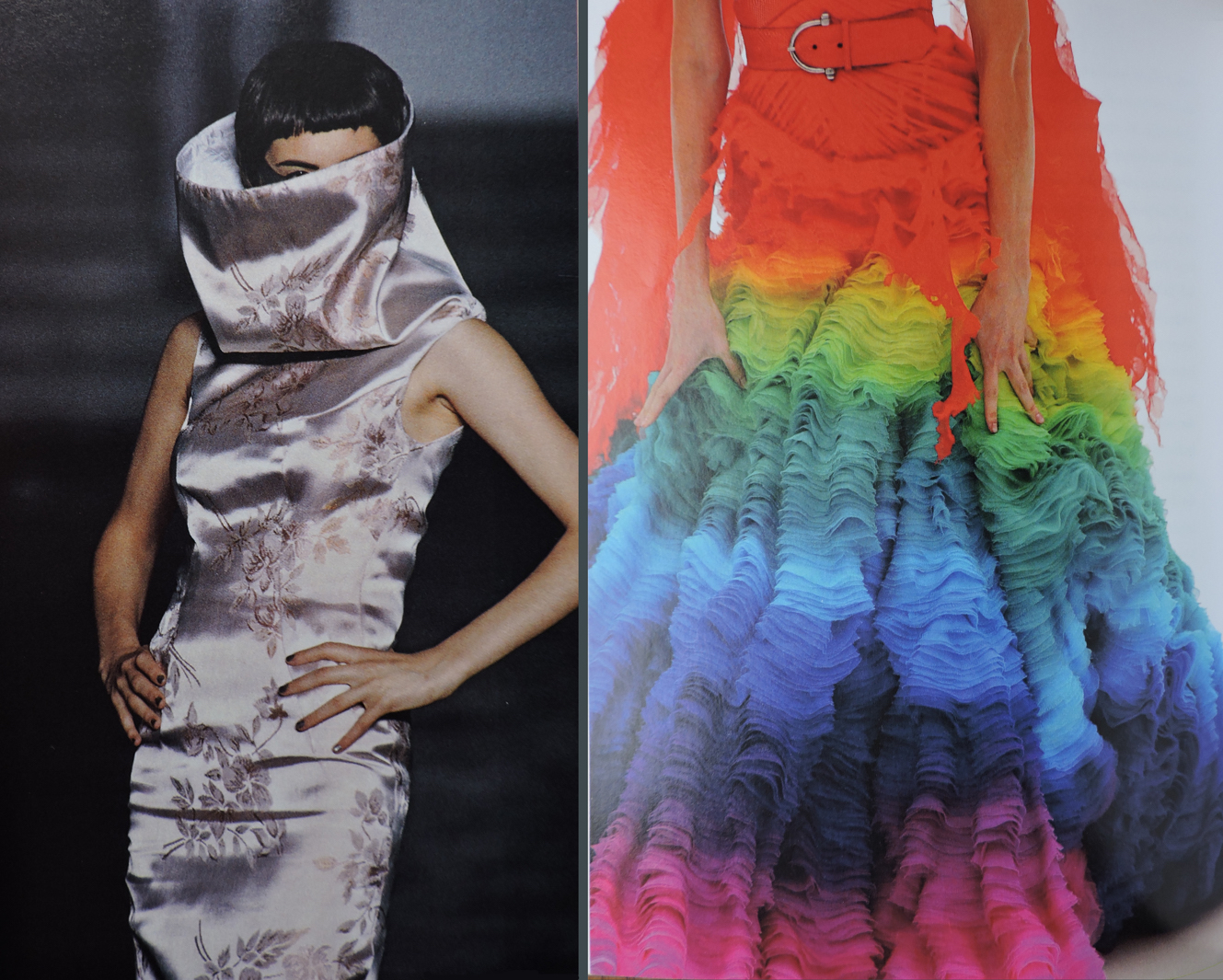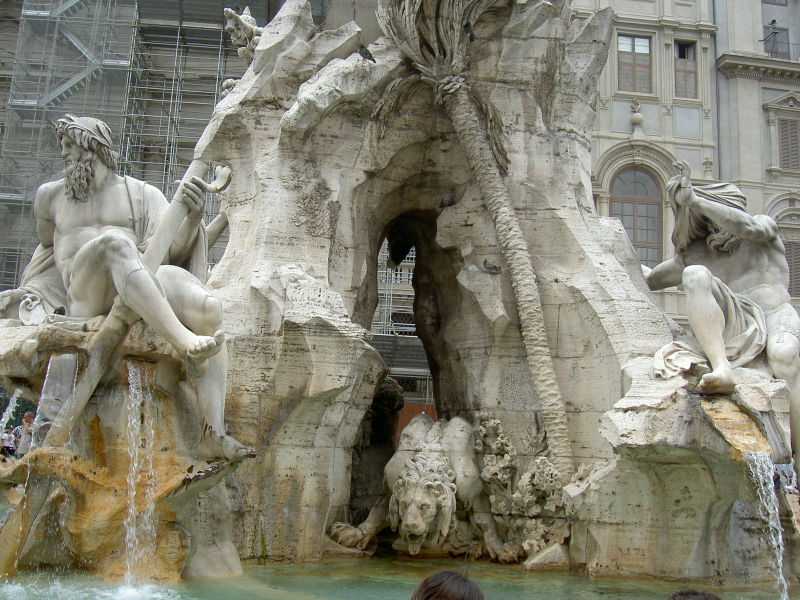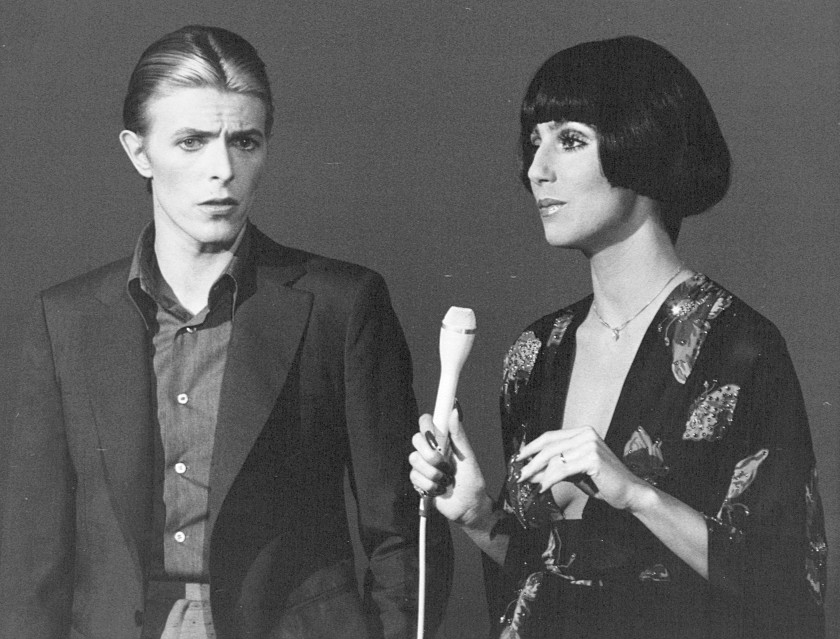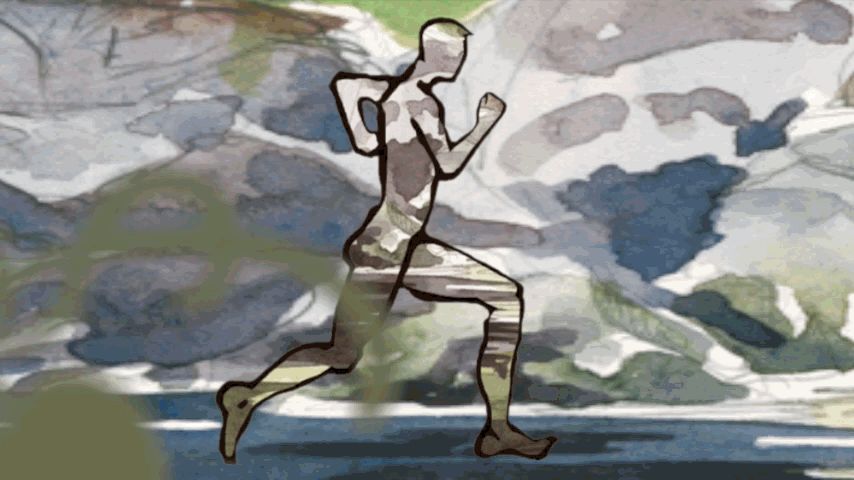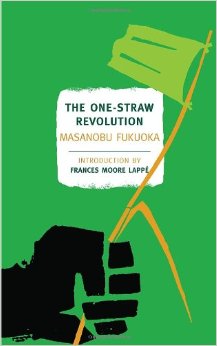Death is in the news, but refuses to give any answers. This is my take on recent terrorist attacks and the attention given to these tragic and senseless incidents on news outlets.
Author Archives: admin
Fashion and Art
What can we learn about art from fashion? At their worst, fashion and art are regarded as superficial, driven by money, vanity and social pressures. Both are elitist, excessive and subject to continual change. On the other hand, both can be fun and creative, adding pleasure and meaning to everyday things.
Fashion may be easier to define than art. Fashion has a practical side and a psychological side. People wear clothes appropriate to changing seasons, weather, social rituals and other conditions. People also wear clothes for show. If you want to attract attention, imagination counts. Clothes are not fixed items. They express personality, social conformity, daring, and individuality. Clothes can be appropriate or inappropriate for the time and place in which they appear. Make a mistake and you might appear ridiculous. Or inspired.
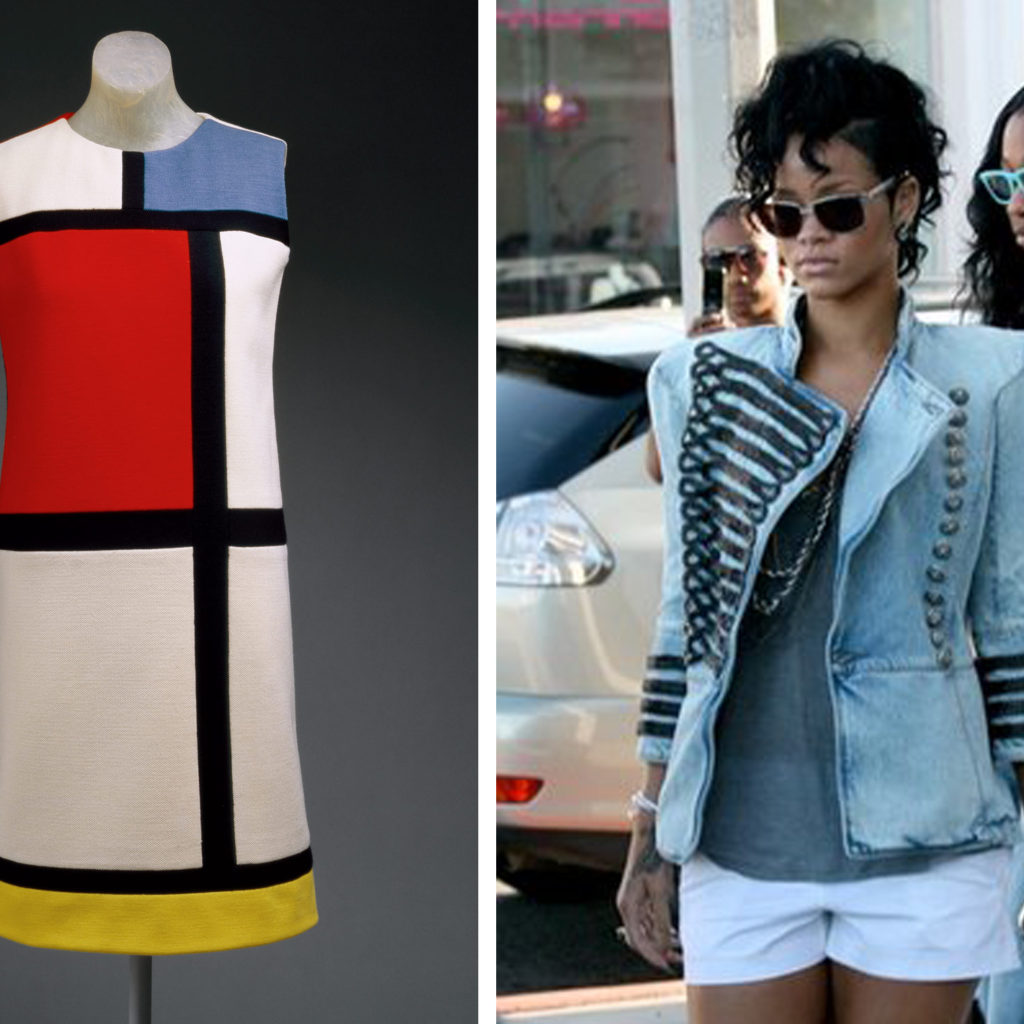
From Mondrian to Rihanna, designers take inspiration from abstract art, pop culture changes the meaning of military wear
Clothes that stand still too long can make those who wear them seem hopelessly dated, out of touch with the changing times. Clothes are subject to trends, as are people. There can be no question about this: clothes get people talking. People are judged, fairly or not, on what they wear and how they wear it.
Fashion is all about context and so is art. Jackson Pollock’s paintings made marvellous backdrops for models in the 1950s. The model above looks like she’s entered the dream world of the painting. Today’s art is all about immersion and altering environments.
We connect clothes with concepts of style, taste and coolness. These are things we admire and want to emulate. Being comfortable in your own skin. Feeling at home wherever you go, operating easily with the world around you, knowing what you can get away with.
I draw and paint pictures to relieve tension, to amuse myself, to try to make sense of the world. The tension around clothes and social events can be disconcerting at times. My wife and I discuss wardrobes for an upcoming wedding. Should we spend hundreds of dollars on a suit or dress that will only be worn once? I dig out old clothes, try on new clothes, send pants to the tailor for adjustments. Then I paint a picture of Kathleen and myself in evening wear, bodies fused together, glamorous mannequins, more than a little absurd.
Fashion demands consensus, as does art. Some styles are too outrageous or too impractical for mainstream tastes. Street fashions fight back with unpredictable results.
The one thing artists cannot control is what people will connect with, talk about and share with others. Through art and clothes we participate in a world of change and, by participating, we influence the direction of that change.
If you’re interested in theories of fashion, the site “love to know” offers a nice overview.
Alexander McQueen: Fashion Rebel

Model Natalia Vodianova poses in the Oyster dress from Alexander McQueen’s 2003 Spring:Summer collection ‘Irere.’ Photo by Peter Lindbergh
I recently came across the excellent bio, Alexander McQueen: The Life and Legacy by Judith Watt, Harper 2012. McQueen (1969-2010) was a fashion god who jettisoned clothing into an age of everyday spectacle and jarring culture clash. McQueen’s runway shows were multi-media extravaganzas that dumbfounded critics and electrified the fashion world. Watt’s biography succinctly overviews the designer’s various collections, interspersed with memories from colleagues and friends. I was struck by the range of McQueen’s inspirations, from punk rock to science fiction, from London’s gay club culture to Scottish history, from the popular mythology of Jack the Ripper to the heroics of Joan of Arc, from the horror films of Kubrick to the romantic films of Hitchcock, from installation art to the paintings of Goya, Bosch and Van Eyck, from modern materials to the natural forms and patterns of birds, butterflies, flowers, snakes, seaweed, moss and ice.

Low tech, high tech. On the left, plastic and mud dress from Nihilism show, Spring/ Summer 1994. On the right: LED cyborg look, AW 1999-2000.
In his early shows, when McQueen had little money for materials, he cut clothes out of clear plastic bags, sewing the pieces in layers and placing red mud and water between the layers to give a look of splattered blood and flesh. While the plastic revealed the models’ bodies, the mud obscured areas, adding a sense of trauma and mysterious inner life. In his rebellion from the norm, McQueen combined ripped clothes and tailored suits, elongated the torso and created strange cocoon-shaped silhouettes. He experimented with unusual materials such as cigarette butts in place of sequins, and had princess dresses splattered on stage with robotic paint machines. Later works featured stuffed birds in head-dresses, parachute capes billowing behind models in elevated wind tunnels, plaster-coated corsets, body armour and Armadillo shoes. Even the Alexander McQueen label attached to clothes was unusual, featuring a lock of hair encased in plastic.
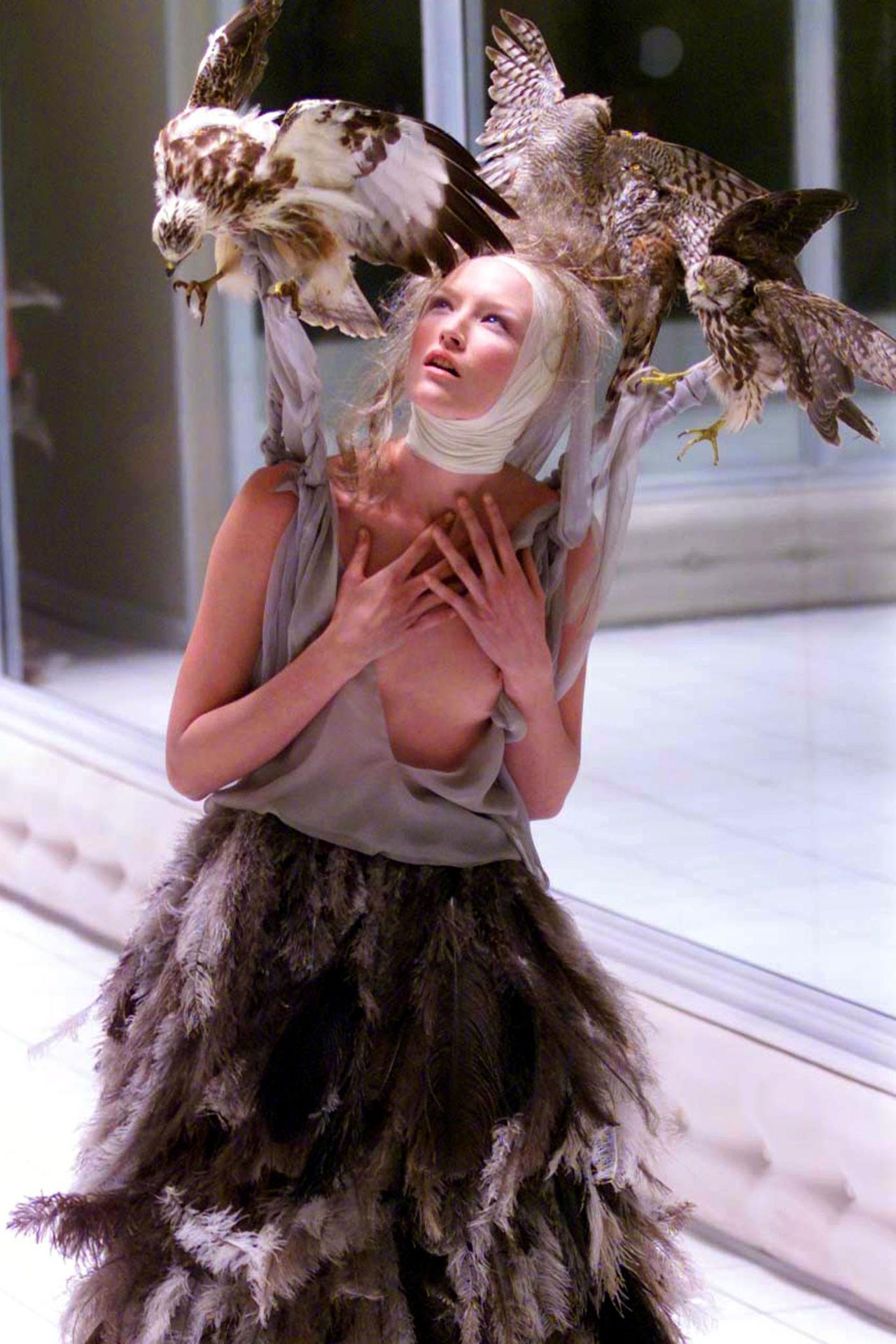
Model Kate Moss strikes a dramatic pose in the glassed-in runway for the VOSS collection, Spring Summer 2001
His collections often had a narrative element. He turned runways into winter landscapes, dance marathons and glassed-in mental asylums. “Irene,” Spring/ Summer 2003, started with a film clip of a shipwrecked woman. She washes ashore in a spectacular oyster dress, setting off encounters with natives of South America, models adorned with red and white face paint, gold-seeking Spanish conquistadors in tight fitting leather body suits, and clothes saturated with the colours of the Amazon rain forest. “Plato’s Atlantis” imagines the aftermath of global warming, with humans evolving into semi-aquatic creatures to adopt to a new water-based world.
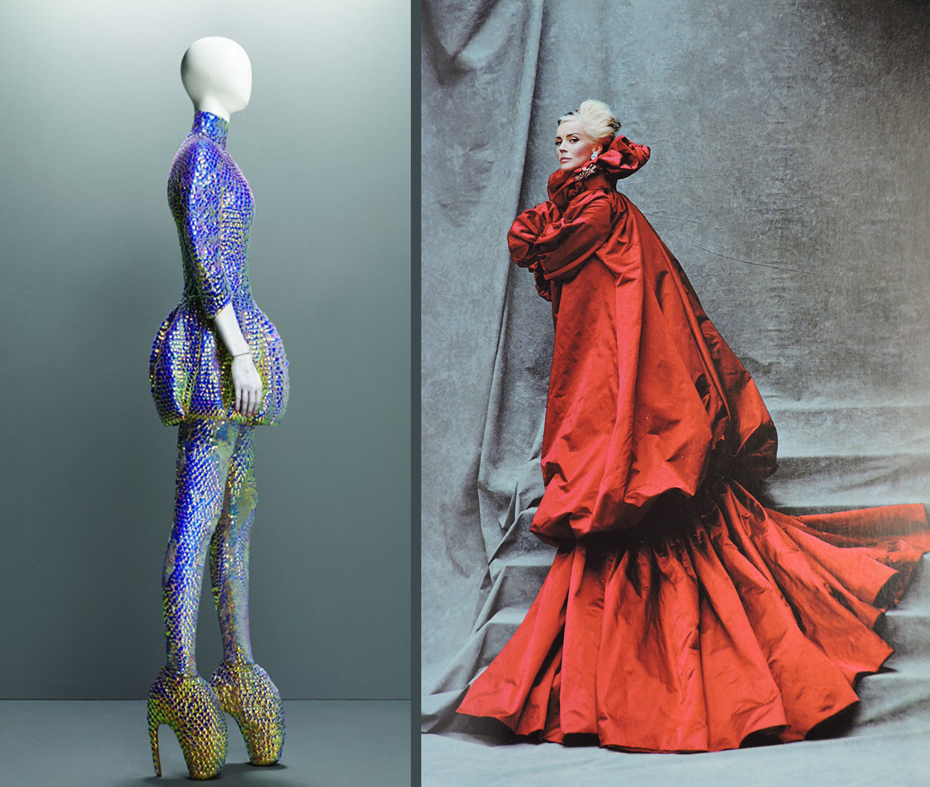
Jellyfish and fairy-tale. On the left, McQueen’s “jellyfish dress” from Plato’s Atlantis, S/S 2010. On the right, Daphne Guiness wears a red silk coat pleated at the cuff from “The Girl who Lived in the Tree” collection, F/ W, 2008-09, photo by Michael Roberts for Vanity Fair.
The site AnOther posts an interview with Andrew Bolton, curator of “Savage Beauty” at the Met, 2011. Bolton explains the title of his McQueen retrospective: “Originally the idea came from a book called The Savage Mind by Claude Levi-Strauss, in which he describes two different types of people: ‘the bricoleur’ who is a jack-of-all-trades and ‘the engineer’ who is an artist. I thought both identities tally with McQueen. He looked everywhere for his inspirations and in that sense he was a bricoleur; but he was also a wonderful artist who had a great sense of virtuosity and incredible conceptual complexity, which was shown through his runway presentations. McQueen merged those two identities and that is where the title comes from. Also, in most of McQueen’s collections there were these dichotomies, whether it was to do with beauty and terror, lightness and darkness or life and death. The title is also a play on these contrasts.”
I also recommend the film McQueen and I. Though it’s a rather sad story of the friendship between McQueen and fashion editor Isabella Blow, the documentary offers insights from collaborators and features clips of several shows that hint at McQueen’s unique vision and compelling sense of theatre.
Fountains
We often encounter fountains in public places. Baroque structures with elaborate river gods and assorted monsters, placed in the heart of a city, attract attention and wonder. In his blog Quadralectic Architecture, Marten Kuilman comments: “The fountain is the messenger of the universe. Water acts as a mirror with an endless reflection and its movement prevents any type of stagnant contemplation.”
Kuilman describes four kinds of fountains: 1) the Arcadian, use of a water feature in garden design to inspire a spirit of tranquility and holiness, 2) monumental: grandiose structures that mark a place of community, as well as referencing gods and other figures of power and influence, 3) practical, many fountains served to provide drinking water for town dwellers, 4) playful, the fountain as a place to stimulate and refresh, disrupting the usual business-oriented attitude of many city dwellers. In Fellini’s film, La Dolce Vita, Sylvia played by Anita Edberg is a mesmerizing enchantress, wild for spontaneous adventure and full of unquenchable energy that the adoring and world-weary Marcello is dumbfounded by, even as she leads him into the waters of the Trevi Fountain, a moment of great romantic possibility and absurd deviance that ends in frustration and exhaustion.
 The playfulness of fountains could have a disruptive quality, as when in 1917 Marcel Duchamp submitted a urinal for inclusion in an art exhibition under the title, “Fountain.” Duchamp’s work was famously rejected; sparking a controversy with lingering questions about originality and context in the world of art. In her work Streams, 1975, contemporary Greek artist Athena Tacha, noted for her environmental sculpture, creates a delightful sense of cascading water simply by placing boulders at irregular points on a steep incline of public stairs in Oberlin, Ohio. A similar set of dancing stairs, without the rocks, and arranged as an amphitheatre, was designed by Tacha for the Muhammad Ali Centre in Louisville, KY in 2008.
The playfulness of fountains could have a disruptive quality, as when in 1917 Marcel Duchamp submitted a urinal for inclusion in an art exhibition under the title, “Fountain.” Duchamp’s work was famously rejected; sparking a controversy with lingering questions about originality and context in the world of art. In her work Streams, 1975, contemporary Greek artist Athena Tacha, noted for her environmental sculpture, creates a delightful sense of cascading water simply by placing boulders at irregular points on a steep incline of public stairs in Oberlin, Ohio. A similar set of dancing stairs, without the rocks, and arranged as an amphitheatre, was designed by Tacha for the Muhammad Ali Centre in Louisville, KY in 2008.
David Bowie: Layers of Ghosts
In the days following David Bowie’s death. I listened to the songs “Life on Mars?” and “The Bewlay Brothers” from the 1971 album Hunky Dory. The lyrics intrigued me.
I was stone and he was wax so he could scream and still relax
Unbelievable … And my brother lays upon the rocks
He could be dead, he could be not, he could be you
He’s chameleon, comedian, Corinthian and caricature
Shooting up pie in the sky
Bewlay brothers
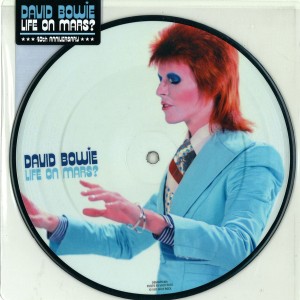 Surely there’s bit of self-portrait in this description. I found a link to a story written by Bowie for the Daily Mail, I went to buy shoes, I came back with Life on Mars, describing 10 favourite underrated songs. Both “Life on Mars?” and “Bewlay Brothers” make the list. About the latter song, Bowie writes:
Surely there’s bit of self-portrait in this description. I found a link to a story written by Bowie for the Daily Mail, I went to buy shoes, I came back with Life on Mars, describing 10 favourite underrated songs. Both “Life on Mars?” and “Bewlay Brothers” make the list. About the latter song, Bowie writes:
“The only pipe I have ever smoked was a cheap Bewlay. It was a common item in the late Sixties and for this song I used Bewlay as a cognomen – in place of my own. This wasn’t just a song about brotherhood so I didn’t want to misrepresent it by using my true name. Having said that, I wouldn’t know how to interpret the lyric of this song other than suggesting that there are layers of ghosts within it. It’s a palimpsest, then.”
I must write Merriam-Webster and suggest they add a new definition for palimpsest: layers of ghosts. The Hunky Dory album has its fair share of ghosts, along with a touch of Nietzsche, aliens, and tributes to other musicians. It’s this mixture of influences, delivered with glitter and angst, that gives Bowie’s work such a unique sense of modernity and other-worldliness.
Bowie helps transition us from the 60s world of peace, love and long hair to a Millennial world of sound and vision, mobile devices and remixed songs. Remixed everything. Among the countless Bowie tributes, I found this delightful illustration substituting Bowie for the Little Prince with the caption; “The man who fell to Earth is back amongst the stars. Rest in peace, David Bowie. Illustration/caption by Jarrett J. Krosoczka.”
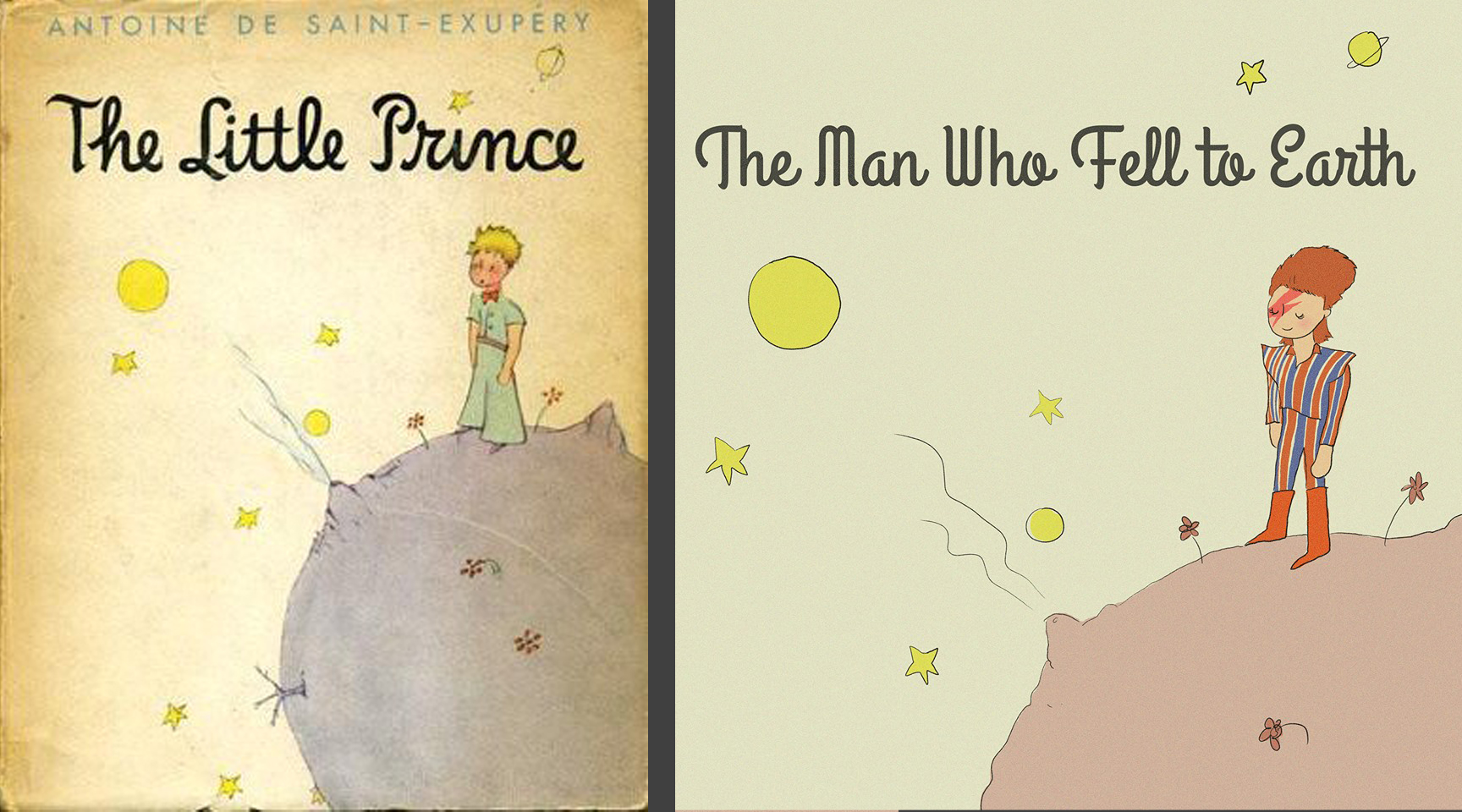 The musician starts the conversation and fans keep it going. On a recent CBC News story, we’re told that Canadian DJ Skratch Bastid’s remix of Bowie’s song, “Let’s Dance” has become a Facebook meme with over 8 million views in five days.
The musician starts the conversation and fans keep it going. On a recent CBC News story, we’re told that Canadian DJ Skratch Bastid’s remix of Bowie’s song, “Let’s Dance” has become a Facebook meme with over 8 million views in five days.
When I think of mash-ups and Bowie, his cut-up writing method comes to mind. Taking his cue from William Burroughs, author of Naked Lunch, Bowie used scissors and pen to spark new thoughts. I ask myself, what would a mash-up of Bowie lyrics look like? Let’s give it a try:
It’s a God-awful small affair
To the girl with the mousy hair (Life on Mars)
He lays her down, he frowns
“Gee my life’s a funny thing, am I
still too young?” (Young Americans)
“You got your mother in a whirl/ She’s not sure if you’re a boy or a girl.” (Rebel Rebel)
“Are you OK?
You’ve been shot in the head
And I’m holding your brains” (Seven Years in Tibet)
I’m looking for a vehicle, I’m looking for a ride
I’m looking for a party, I’m looking for a side. (Candidate)
He says he’s a beautician and sells you nutrition and keeps all your dead hair for making up underwear. (Jean Genie)
You’ve really made the grade
And the papers want to know whose shirts you wear (Space Oddity)
So I’ll break up my room and yawn and run to the centre of things. (Sweet Thing)
News guy wept when he told us Earth was really dying. (Five Years)
“I’ll make you a deal like any other candidate.” (Candidate)
Seems you’re trying not to lose
Since I’m not supposed to win. (Win)
Oh no love! you’re not alone
You’re watching yourself but you’re too unfair (Rock n roll suicide)
Every chance,
every chance that I take
I take it on the road… (Always Crashing in the Same Car)
I’ve lived all over the world
I’ve left every place. (Be My Wife)
You will be like your dreams tonight. (Joe the Lion)
I’m the space invader. (Moorage Daydream)
Ch-ch-ch-ch-changes
(Turn and face the strange) (Changes)
Then let it be, it’s all I ever wanted
It’s a street with a deal, and a taste
It’s got claws, it’s got me, it’s got you … (Sweet Thing reprise)
Multiple conversations. The search for experience. Exhibitionist finds relief in theatre, masks. The future looks bleak. Experience is filtered through news, media, entertainment. Distrust politicians. Rock ‘n roll is a collective experience. Fame is a trap. Keep dreaming. Space aliens. Nothing is permanent. Embrace change.
My final thought on Bowie: he doesn’t just change for the sake of change. He grows. He develops, he educates himself by traveling, working with gifted people, stretching himself through relationships, marriages, films, families. He stretches himself by renouncing a popular path for an uncertain path. He teaches us all how to become an alien and thrive.
Thanks Bowie, it’s been a blast.
Definition of a good book
Poet John Milton defined a good book as: “The precious life-blood of a master spirit, embalmed and treasured up on purpose to a life beyond life.” (Areopagitica, 1644)
The quote appears in Areopagitica, a defence of free speech written by Milton after visiting the famous astronomer Galileo in 1638. Galileo was then under house arrest in Italy, having been forced by the Inquisition to recant his theory that the earth revolved around the sun. The New Yorker article, Return to Paradise, June 2, 2008, describes Milton’s visit. The article contrasts the modernity of Galileo’s view of the world, with Milton’s rather more old-fashioned notions of God at war with his rebel angels. What I find interesting is that the English poet seeks out a scientist and in some ways sees him as a kindred spirit–a man struggling to understand and convey a picture of the universe.
In this post, I focus on Milton’s definition of a good book. The definition is one sentence charged with several metaphors and paradoxes. For instance, “precious life-blood” is a metaphor referring to the human body. In 1628, Milton’s English contemporary William Harvey published his book De Motu Cordis, outlining for the first time the precise way that blood circulated within the body. This “life-blood” contrasts with a “master spirit.” A spirit is immaterial: a personality, a way of thinking and being. The blood of a spirit or immaterial being is a paradoxical concept as ghosts usually lack physical attributes like blood. To modern ears, the phrase “master spirit” sounds pompous and ominous, emerging out of an era of masters and slaves. Slavery was not abolished in England until 1833, a century and a half after Milton’s death. However, Milton most likely meant “master” in the sense of “master of himself,” an independent thinker. The phrase “master spirit” also reminds me of the apprentice system. One is not born an artist; one learns to be an artist through experience and the mastery of a craft. Canadian critic Northrop Frye uses the phrase “the educated imagination” in much the same way. When Milton combines these two metaphors, “the precious life-blood of a master spirit” he suggests that books have a physical element that relate to the laws of nature and science, as well as a spiritual aspect that is more elusive but still shaped by tradition, upbringing and study.
Milton’s phrase “embalmed and treasured up on purpose to a life beyond life” presents a fascinating mixture of associations. Embalming was practised by the royalty in Britain at this time. For example, King James I had his two-year-old daughter Margaret embalmed when she died in 1600. This same period saw a proliferation of funerary monuments, and the wide-spread use of epitaphs on graves, identifying the occupation and interests of the deceased, reflect a new belief in the importance of the individual. “Embalmed and treasured up” the writer acts as mortician and pirate. He is both preserver and thief, with his stolen observations of a particular time and culture. This buried treasure is hidden and the readers of a good book must uncover the rich secrets that lie within. There is a further implication that the value of a good book, like buried treasure, increases as it lives beyond the disappearance of the world in which it was created. That it can give “life beyond life” gives a book a kind of supernatural power. Through books, we move forward and backward through time and converse with the dead. Books promise fame and immortality to their creators, but anyone who reads a book written in the past, participates in this powerful exchange that exceeds the limits of a single life.
Milton uses the word “life” three times in his short definition. Life can mean vitality, as in “he is full of life.” There are kinds and degrees of life: “a life of action and purpose” or “a meager, frightened life.” When we say, “Tell me about your life,” we are asking for a story. A good book is above all else a good story. Ecology is the study of the interaction of many life-forms, as when we speak of “life on earth.” Life beyond life suggests resurrection and a religious state of nirvana or transcendence.
There’s a paradox in this as well. When Milton says, “life beyond life,” isn’t this the same as saying “life beyond death”? Life is also death. A good book is a recognition of this and also an escape from it. It is a recognition of the human condition, with an escape clause built in.
In summary, a good book for Milton is blood, spirit, monument, treasure and time capsule. It is life, but also death and an escape from death. That’s quite a definition.
Dancer
I continue to play with hand-drawn gifs. A dancer turns into a winged creature, veering between cartoon and abstraction. The sequence was first drawn on Flipbook, then modified in Photoshop.
Flipbook Fun
Here’s a great resource for teachers or anyone interested in making quick animations. Flip book! The short animations you make on this site can be saved as GIF files. Many successful gifs are designed so that the end returns to the beginning, making the sequence appear to run in a continuous loop.
Water Run
One Straw Revolution
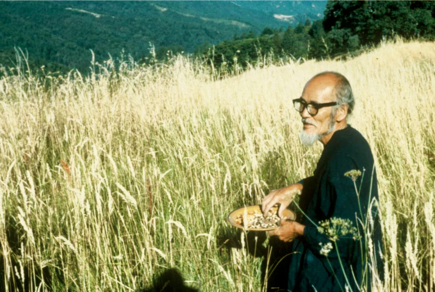 Masanobu Fukuoka (1913-2008) was a visionary ecologist, farmer and author. His pursuit of a balanced life within a healthy productive environment was carried out on a small scale, but with an originality and defiance of accepted wisdom that has inspired others around the world. “The ultimate goal of farming,” Mr. Fukuoka says, “is not the growing of crops, but the cultivation and perfection of human beings.” (One Straw Revolution, p. xiv)
Masanobu Fukuoka (1913-2008) was a visionary ecologist, farmer and author. His pursuit of a balanced life within a healthy productive environment was carried out on a small scale, but with an originality and defiance of accepted wisdom that has inspired others around the world. “The ultimate goal of farming,” Mr. Fukuoka says, “is not the growing of crops, but the cultivation and perfection of human beings.” (One Straw Revolution, p. xiv)
Fukuoka began his career as a scientist based in Yokohama working for the Japanese government. He researched ways of combatting diseases in valuable agricultural crops. He was happy and successful. Then, while still a young man, he was hospitalized with pneumonia. During his recovery, he had a spiritual awakening, which led him to question everything he had previously been taught. He scoured the countryside in search of traditional farms, asking about farming methods before the arrival of modern chemicals and large machinery. Could it be that the technology used in industrial farming was creating more problems than it solved? Were the designers of ever-more powerful fertilizers, pesticides and genetically-modified crops moving in the wrong direction? Was there an alternative path that would not be so disruptive of native eco-systems?
Fukuoka resigned his government position to become a farmer, moving back to his father’s farm on the southern island of Shikoku to take care of a hillside orchard. Here Fukuoka applied traditional non-invasive approaches to growing fruit and rice. News of his unusual methods spread and visitors began arriving at his farm, many of whom became volunteer workers. Teaching these young recruits led Fukuoka to jot down his ideas. The resulting book, One Straw Revolution, published in 1975, was an astonishing statement of a creed of simplicity and adherence to natural ways.
In his preface to the English language edition that appeared in 1978, poet and activist Wendell Berry comments: “Mr. Fukuoka has understood that we cannot isolate one aspect of life from another. When we change the way we grow our food, we change our food, we change society, we change our values. And so this book is about paying attention to relationships, to causes and effects, and it is about being responsible for what one knows.” (p. xii)
Here is a sampling from the book. I start with Fukuoka’s contrast of his own traditional farm with that of a modernized neighbouring farm.
“Make your way carefully through these fields. Dragonflies and moths fly up in a flurry. Honeybees buzz from blossom to blossom. Part the leaves and you will see insects, spiders, frogs, lizards, and many other small animals bustling about in the cool shade. Moles and earthworms burrow beneath the surface. This is a balanced rice field ecosystem. Insect and plant communities maintain a stable relationship here. It is not uncommon for a plant disease to sweep through the area, leaving the crops in these fields unaffected.
“And now look over at the neighbor’s field for a moment. The weeds have all been wiped out by herbicides and cultivation. The soil animals and insects have been exterminated by poison. The soil has been burned clean of organic matter and micro-organisms by chemical fertilizers. In the summer you see farmers at work in the fields, wearing gas masks and long rubber gloves. These rice fields, which have been farmed continuously for over 1,500 years, have now been laid waste by the exploitive farming practices of a single generation.”
Fukuoka goes on to outline the core ideas that differentiate his approach from large commercial practices. He calls these the “four principles of natural farming.”
“The first is no cultivation, that is, no plowing or turning of the soil. For centuries, farmers assumed that plowing is essential for growing crops. However, non-cultivation is fundamental to natural farming. The earth cultivates itself naturally be means of the penetration of plant roots and the activities of micro-organisms, small animals and earthworms. The second is no chemical fertilizer or prepared compost. People interfere with nature, and, try as they may, they cannot heal the resulting wounds. The third is no weeding by tillage or herbicide. Weeds play their part in building soil fertility and in balancing the biological community. As a fundamental principle, weeds should be controlled, not eliminated. Straw mulch, a ground cover of white clover interplanted with the crops and temporary flooding provide effective weed control in my fields. The fourth is no dependence on chemicals. From the time that weak plants developed as a result of such unnatural practices as plowing and fertilizing, disease and insect imbalance became a great problem in agriculture. Nature, left alone, is in perfect balance.” (p. 33-34)
In the middle of his book, Fukuoka discusses the need for rethinking long-standing harmful practices. He points out that once a practice becomes habitual, no matter how ineffective it proves, people have trouble changing course because their minds have grasped hold of a fixed idea that seems all but unshakable.
“To the extent that the consciousness of everyone is not fundamentally transformed, pollution will not cease.” (p. 82)
“When a decision is made to cope with the symptoms of a problem, it is generally assumed that the corrective measures will solve the problem itself. They seldom do … Until the modern faith in big technological solutions can be overturned, pollution will only get worse.” (p. 84)
In the final section to his book, Fukuoka turns his attention to the subject of food. He argues that people’s diets are unhealthy because they are based on ill-conceived notions of what is and isn’t tasty. The prejudice against simple natural foods is an acquired cultural absurdity.
“A natural person can achieve right diet because his instinct is in proper working order. He is satisfied with simple food; it is nutritious, tastes good , and is useful daily medicine.Food and the human spirit are united. ” (p.136)
“Modern people have lost their clear instinct … They go out seeking a variety of flavours. Their diet becomes disordered; the gap between likes and dislikes widens, and their instincts become more and more bewildered. At this point people begin to apply strong seasoning to their food and to use elaborate cooking techniques, further deepening the confusion. Food and the human spirit have become estranged.” (p. 136)
“People nowadays eat with their minds, not with their bodies … Foods taste good to a person not necessarily because they have nature’s subtle flavours and are nourishing to the body, but because his taste has been conditioned to the idea that they taste good.” (p. 137)
Even by the standards of most conscientious organic farmers, Fukuoka’s methods often appear radical. Critics view his ideas as impractical or unsuited for Western climates and conditions. Fukuoka counters that his methods are not quick easy fixes. Patience and experimentation are required. What Fukuoka has achieved is help spark a debate about food and land use, a debate which gains in relevance as concerns mount over the health risks of GMOs, pesticides and land depletion. Fukuoka is now regarded as a pioneer of the permaculture movement. His vision of farming as a seeking of balance in a larger ecosystem offers a healthy alternative to the destructive practices that are currently employed.
